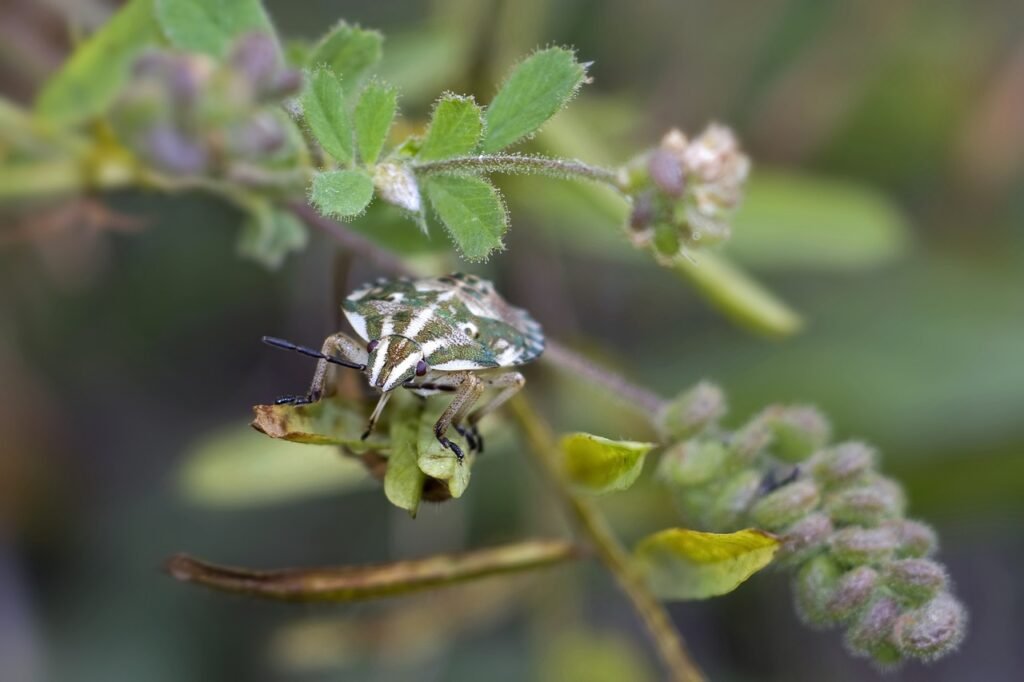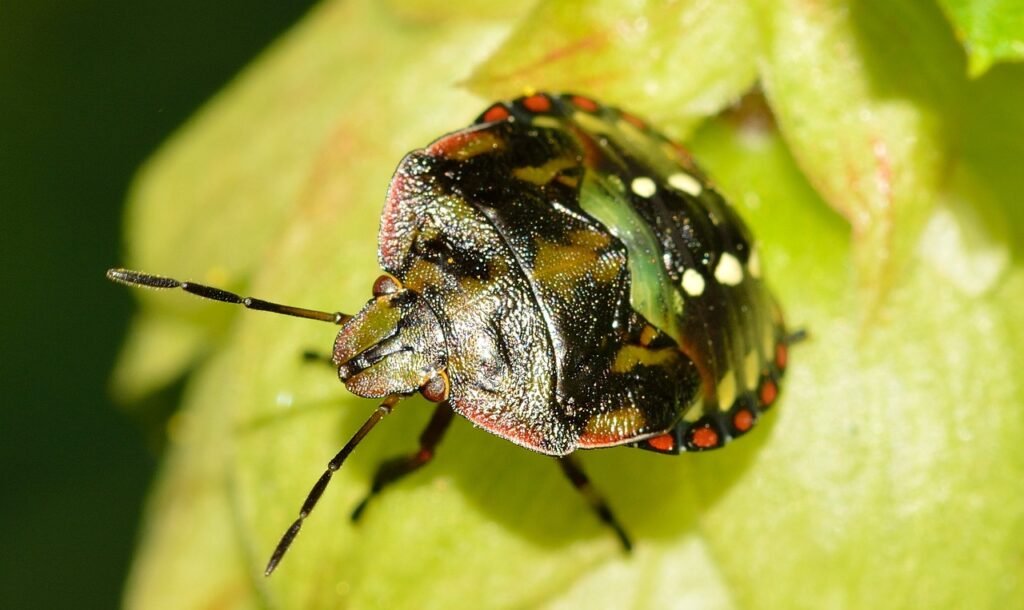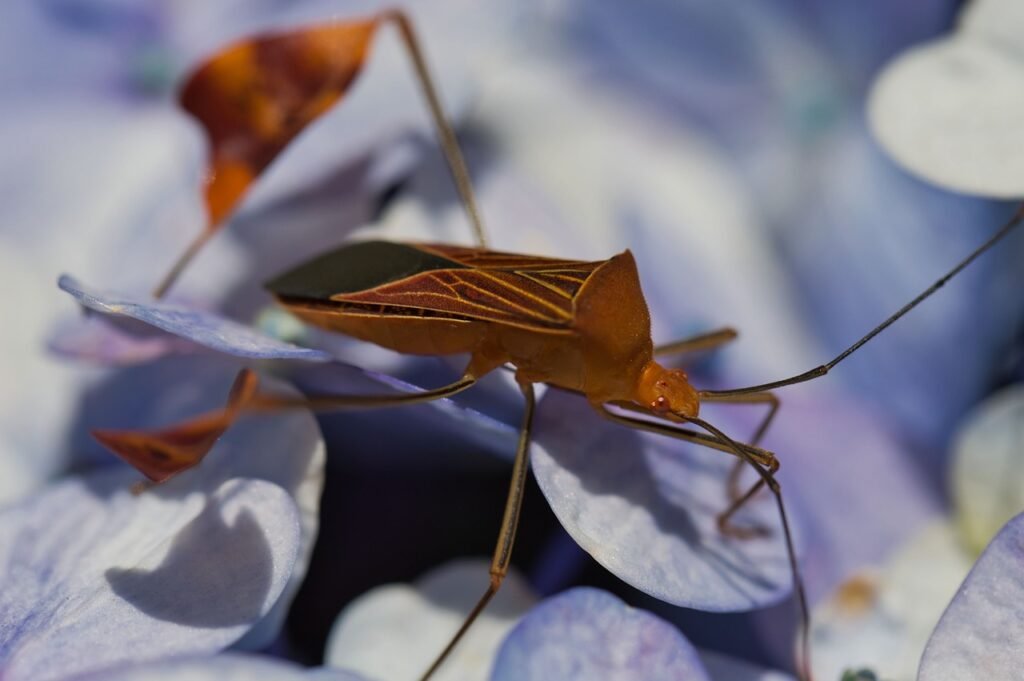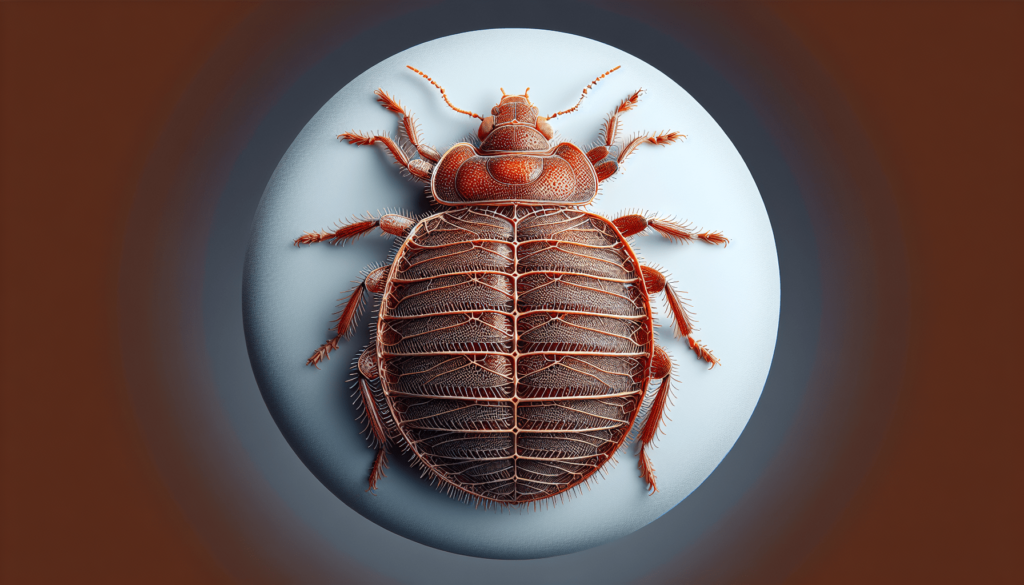Have you ever wondered what these pests look like? Bed bugs are small, parasitic insects that feed on the blood of humans and animals. While they are notoriously difficult to eliminate once an infestation occurs, identifying them early on is crucial in order to prevent their spread. In this article, we will explore the physical appearance of bed bugs, providing you with a comprehensive understanding of their size, color, and shape. By the end of this article, you will be equipped with the knowledge needed to identify these pesky creatures and take the necessary steps towards eradicating them from your home. So, let’s dive into the world of bed bugs and unveil their appearance once and for all.
Description of Bed Bugs
Bed bugs are small, oval-shaped insects that feed on the blood of animals and humans. They are nocturnal pests, meaning they are most active during the night. Bed bugs are known for infesting homes, hotels, and other areas where people sleep or rest. They can be found all over the world and are particularly skilled at hiding in cracks and crevices, making them difficult to detect and eliminate.
Basic characteristics of bed bugs
Bed bugs have a flat body shape and are reddish-brown in color. They are about the size of an apple seed, ranging from 4 to 5 millimeters in length. Their bodies are segmented into three parts: the head, thorax, and abdomen. They have six legs and two antennae, which they use to sense their surroundings and locate potential hosts for feeding.
Bed bug size
Bed bugs go through multiple life stages before reaching adulthood. The size of a bed bug depends on its life stage. An adult bed bug is approximately the size of an apple seed, as mentioned earlier. However, the size of nymphs, which are immature bed bugs, varies depending on their age. Younger nymphs are smaller, around the size of a pinhead, and gradually grow larger as they molt and develop into adults.
Anatomy of bed bugs
The anatomy of bed bugs consists of several distinct features. Their bodies are covered in a hard exoskeleton, which protects their internal organs. They have piercing-sucking mouthparts, allowing them to feed on blood by piercing the skin of their hosts. Bed bugs also possess specialized scent glands that produce a musty odor, which is often one of the signs used to detect their presence in infested areas.
Bed Bugs at Various Life Stages
Appearance of bed bug eggs
Bed bug eggs are tiny and difficult to see with the naked eye. They are about 1 millimeter in length and are white or translucent in color. Bed bugs lay their eggs in secluded areas, such as mattress seams, cracks in furniture, or behind baseboards. The eggs are often laid in clusters or batches and can be difficult to spot without proper inspection.
Distinct features of nymph or immature bed bugs
Nymphs, or immature bed bugs, go through five stages of development before reaching adulthood. They look similar to adult bed bugs, but are smaller in size and lighter in color. As they grow and molt, nymphs shed their exoskeletons, leaving behind empty casings, known as exuviae. These exuviae can serve as evidence of a bed bug infestation.
Distinguishing adult bed bugs
Adult bed bugs have distinct features that set them apart from nymphs. They have a more elongated and flattened body shape compared to nymphs. Additionally, adult bed bugs have well-developed wings, although they are unable to fly. Their color ranges from reddish-brown to dark brown after feeding, while unfed bed bugs appear lighter in color.

This image is property of pixabay.com.
Color Features of Bed Bugs
Original color of bed bugs
The original color of bed bugs is typically a light brown or tan. Unfed bed bugs appear lighter in color, while those that have fed on blood may have a darker, reddish-brown color. It is important to note that the color may vary depending on the individual bug, as well as its age and feeding status.
How color changes after feeding
After feeding, bed bugs undergo a visible color change. Their bodies become engorged with blood, causing them to appear darker and more reddish in color. This change in color is a result of the blood meal that bed bugs require to survive and reproduce. The color change can be an indicator of recent feeding activity in an infested area.
Close Up View of Bed Bugs
Features under magnification
When viewed under magnification, bed bugs reveal intricate details of their anatomy. Their bodies are covered in tiny, hair-like structures called setae, which help them navigate their environment. Bed bugs also have segmented antennae, allowing them to detect the presence of potential hosts or sources of food. Their mouthparts, including the piercing-sucking stylet, can also be observed in greater detail under magnification.
Recognizing bed bug body parts
Understanding the different body parts of a bed bug can aid in their identification. The head of a bed bug contains its mouthparts, eyes, and antennae. The thorax, located behind the head, has six legs and is responsible for the bug’s mobility. The abdomen, located towards the rear of the body, houses the bed bug’s internal organs, including its reproductive system.

This image is property of pixabay.com.
Bed Bug Bites
How bed bug bites look
Bed bug bites typically appear as small, red welts on the skin. They are often grouped together in a line or cluster, as bed bugs tend to bite multiple times in the same area. The bites may be accompanied by itching, swelling, and a mild allergic reaction in some individuals. However, it is important to note that not everyone reacts to bed bug bites in the same way, and some people may not experience any symptoms at all.
Distinguishing bed bug bites from other insect bites
Differentiating bed bug bites from other insect bites can sometimes be challenging, as the reactions can be similar. However, there are a few key characteristics that can help identify bed bug bites. Bed bug bites often appear in a linear or clustered pattern, whereas bites from other pests may be more random. Additionally, bed bug bites tend to be smaller and more localized compared to mosquito or flea bites.
Detecting Bed Bugs In Your Home
Possible signs of bed bug infestation
Detecting a bed bug infestation in your home requires careful observation and inspection. Some common signs of bed bugs include:
- Presence of live bed bugs: Bed bugs can be spotted crawling in various areas of the home, such as on bedding, furniture, or walls.
- Bed bug bites: If you or your family members wake up with unexplained bites that match the description of bed bug bites, it may indicate an infestation.
- Bloodstains on bedding: When bed bugs feed, they may leave behind small bloodstains on sheets or pillowcases.
- Dark spots or fecal matter: Bed bugs excrete dark, rust-colored stains or fecal matter on surfaces or in areas where they hide.
- Musty odor: Bed bugs release a distinct, musty odor, particularly when their population is large.
Identifying bed bug droppings and eggs
Bed bug droppings, also known as fecal spots, are small black or dark brown spots that resemble pepper flakes. These droppings can often be found on surfaces where bed bugs congregate or travel, such as on mattresses, box springs, or along baseboards. Bed bug eggs, on the other hand, are small and white, typically found in clusters or batches in hidden areas. They are about 1 millimeter in length and can be difficult to spot without careful inspection.

This image is property of pixabay.com.
Bed Bug vs Other Insects
Bed bug vs Tick
While bed bugs and ticks are both ectoparasites that feed on blood, there are notable differences between the two. Bed bugs are typically smaller, measuring around 4 to 5 millimeters, while ticks can vary in size depending on the species.
Bed bugs have a flattened shape, while ticks have a more rounded and elongated body. Additionally, ticks have specialized mouthparts designed for latching onto their hosts, while bed bugs have piercing-sucking mouthparts. Lastly, ticks are commonly found in outdoor environments, while bed bugs prefer indoor habitats, particularly areas where people sleep or rest.
Bed bug vs Flea
Bed bugs and fleas are both blood-feeding pests, but they differ in various aspects. Bed bugs are typically larger than fleas, measuring around 4 to 5 millimeters, while fleas are smaller, usually 1 to 3 millimeters in length.
Bed bugs have a flat body shape, while fleas have a more compact and rounded appearance. Fleas also have powerful hind legs adapted for jumping, while bed bugs do not possess this ability. Furthermore, fleas are generally associated with animals, such as dogs or cats, while bed bugs primarily infest human habitats.
Bed bug vs Spider
While spiders and bed bugs may both coexist in indoor environments, there are clear distinctions between the two. Spiders belong to the arachnid family and have eight legs, whereas bed bugs are insects with six legs.
Spiders are predators that capture and feed on other insects, including bed bugs. However, unlike spiders, bed bugs are blood feeders that rely on hosts for their nutrition. Additionally, spiders are typically larger in size and have a more varied appearance, with diverse colors and patterns, while bed bugs are consistently reddish-brown in color.
Health Risks Associated with Bed Bugs
Possible allergic reactions to bed bug bites
Bed bug bites can cause various allergic reactions in individuals who are sensitive or allergic to their saliva. These reactions can range from mild to severe and may include symptoms such as itching, redness, swelling, and even blistering. In some cases, bed bug bites can trigger anaphylaxis, a severe allergic reaction that requires immediate medical attention.
Disease transmission through bed bugs
While bed bugs are known to feed on human blood, research has shown no evidence of them transmitting diseases directly to humans. Bed bugs are not known vectors for diseases like mosquitoes or ticks. However, it is still important to address a bed bug infestation promptly to avoid potential secondary issues, such as secondary skin infections from scratching the bites.

Preventing Bed Bug Infestation
Tips to avoid bed bugs
Preventing a bed bug infestation involves taking proactive measures to minimize the chances of bed bugs entering your home. Here are some tips to consider:
- Inspect used furniture: If you are bringing in used furniture, thoroughly inspect it for signs of bed bugs before bringing it indoors.
- Practice good hygiene: Regularly clean and vacuum your home to reduce hiding places for bed bugs.
- Use mattress encasements: Encase your mattress and box spring in protective covers designed to prevent bed bugs from infesting them.
- Be cautious when traveling: Inspect hotel rooms for signs of bed bugs before unpacking, and keep your luggage elevated off the floor.
- Check secondhand items: When purchasing secondhand clothing or items, inspect them carefully for any signs of bed bugs before bringing them into your home.
Importance of regular cleaning and hygiene
Maintaining good cleaning and hygiene practices in your home is crucial for preventing bed bug infestations. Regularly vacuuming carpets, rugs, and upholstery can help remove any potential hiding places for bed bugs. Additionally, washing bedding, curtains, and clothing in hot water and drying them on high heat can kill any bed bugs or their eggs that may be present. Keeping a clean and clutter-free environment makes it more difficult for bed bugs to establish and thrive in your home.
Extermination and Control of Bed Bugs
Professional pest control for bed bugs
In cases of severe bed bug infestations, it is often necessary to seek professional pest control services. Pest control professionals have the knowledge, experience, and tools to effectively eliminate bed bugs from your home. They may use a combination of treatments, such as insecticide sprays, steam treatments, and heat treatments, to target and eradicate bed bugs at all stages of their life cycle.
Do-it-yourself methods of getting rid of bed bugs
For smaller infestations or as a supplemental measure alongside professional treatment, there are several do-it-yourself methods that can help eliminate bed bugs. These include:
- Vacuuming: Regularly vacuuming infested areas, along with cracks and crevices, can help remove live bed bugs and their eggs.
- Laundering infested items: Washing bedding, clothing, and other infested items in hot water and drying them on high heat can kill bed bugs.
- Freezing infested items: Extreme cold temperatures, below 0°F (-18°C), can be effective in killing bed bugs and their eggs.
- Encasing mattresses and furniture: Using special encasements designed to trap and suffocate bed bugs can help prevent them from infesting your mattress or furniture.
- Diatomaceous earth: Applying a thin layer of food-grade diatomaceous earth in areas where bed bugs hide can help dehydrate and kill them.
Effectiveness of various bed bug treatments
The effectiveness of different bed bug treatments may vary depending on the extent of the infestation and the specific circumstances. Professional pest control treatments, when conducted by trained experts, are often the most effective at eliminating bed bugs. DIY methods, while useful for smaller infestations, may not be sufficient for larger or more persistent infestations. It is important to consult with a professional to determine the best course of action for your specific situation.
In conclusion, understanding the characteristics, appearance, and behavior of bed bugs is crucial for detecting, preventing, and controlling infestations. By familiarizing yourself with the signs of bed bugs and implementing preventive measures, you can minimize the risk of an infestation in your home. In the event of an infestation, seeking professional assistance is recommended for effective extermination and long-term control. Remember, early detection and prompt action are key in dealing with bed bugs effectively.

